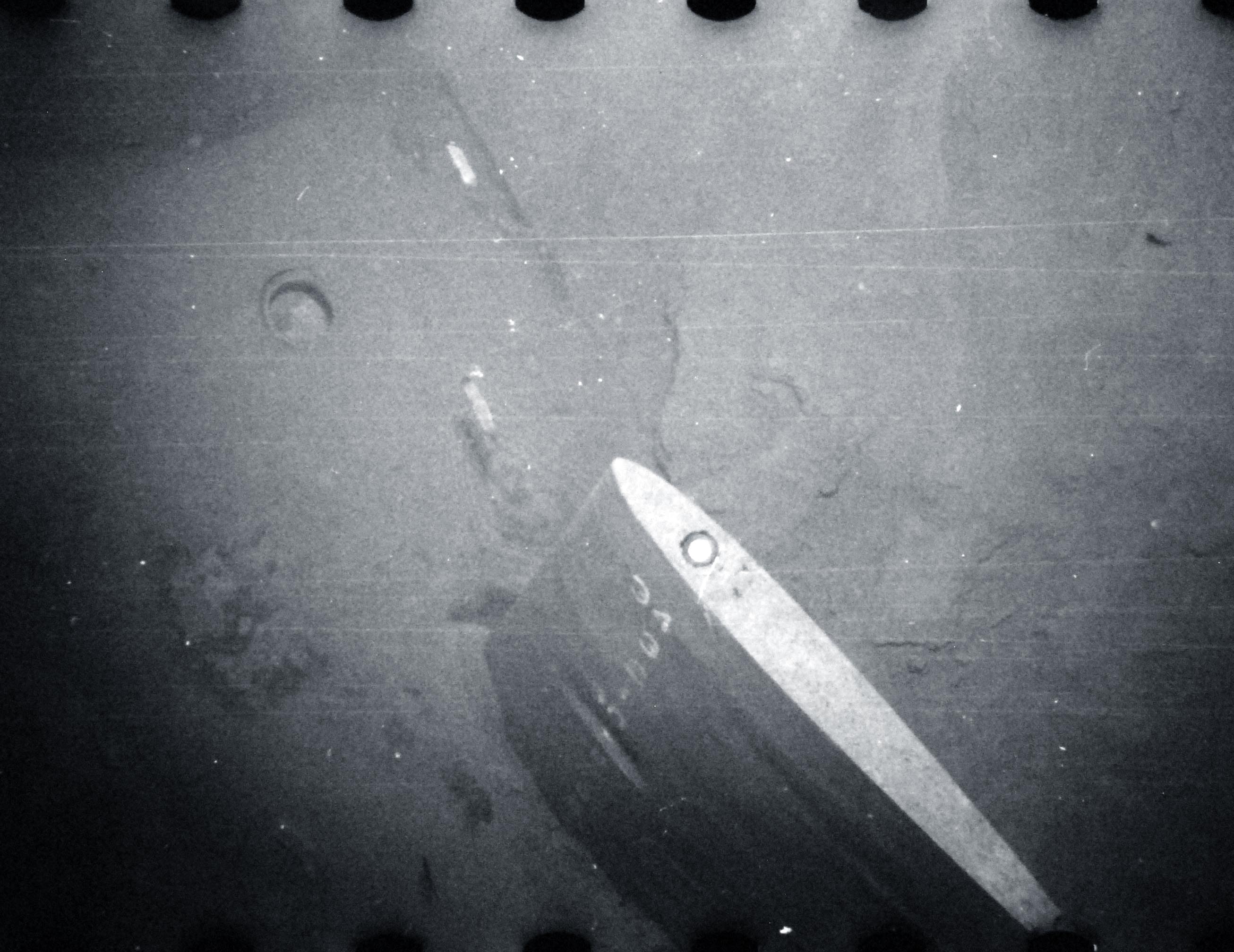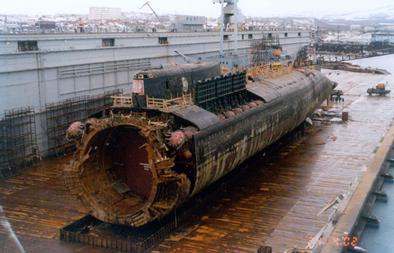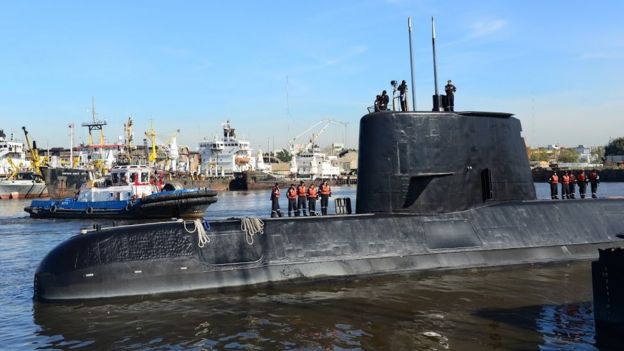USS Threasher
|
The Threasher was lost on 10 April 1963, the first and worst sinking of a US nuclear-powered submarine. After roughly nine months of overhaul the submarine left port for sea trials. During these sea trials communication with the USS Threasher were lost, however this "was not necessarily cause for alarm"1 After some time where no contact with the Threasher was recieved the USS Skylark, a submarine rescue ship, informed the Navy that the Threasher was lost and a search was underway. Eventually debries were located and on 7 September 1963 the search was officially terminated, and a Court of Inquiry was convened. The court, presided over by Vice Admiral Bernard L. Austin, was not able to definiteively determine what caused the accident. The most likely senario is that as the submarine approached test depth a leak occured, causing an electrical short and the subsiquent loss of power that doomed the USS Threasher and the 129 sailors aboard.1 |
 |
USS Scorpion
 |
In 1968 the second US nuclear-powered submarine was lost, along with her crew of 99 sailors. Like the Threasher the accident that caused the sinking of the Scorpion cannot be determined. Various theories have been proposed, the two strongest of which involves a hot run of a torpedo2 or a malfunction with the trash ejector. A hot run occurs when the battery that operates the torpedo activates. Hot runs occured in torpedos of the same type on several other submarines, although none caused those submarines to sink. Additionally a simulation with the Scorpion's executive officer and a hot running torpedo lead to the simulated implosion off the submarine below test depth one second before the implosion was heard in the actual event. |
K-141 Kursk
|
The Kursk was a Russian submarine lost on 12 August 2000. It sank in the Barents Sea killin all 118 crewman, although 23 managed to survive for several days after the sinking. Two detected explosions were strong enough to be detected by seismographs in Alaska. It was not realized that the submarine was missing until six hours after the initial explosions occured. It then took a further 16 hours for the sub to be located as the emergency rescue buoy had been disabled. Over the course of the next several days the Russians used different diving bells in an attempt to reach the hatch of the Kursk. Although British and Norway offered assistance in reaching the stricken submarine it took five days for President Vladimir Putin to allow the navy to accept assistance. One week after the sinking Norwegian divers managed to open the rear hatch looking for survivors but found it flooded. The wreck was then raised and an investigation began. The sinking was eventually attributed to a faulty weld in the casing of a practice torpedo. The first explosion demoloshed the torpedo room and ignited fire that then detonated the equivilent of between 2 and 3 tons of TNT in the remaining torpedos. After the submarine was retrieved from the sea floor it was found that 23 sailors aft of the nuclear reactor had managed to survive the sinking but later died in a fire or sufficated when that fire used up the remaining oxygen. |
 |
ARA San Juan
 |
The ARA San Juan went missing on 17 November 2017. While the submarine has not yet been located it is believed that water entered through the snorkel, a device which allows the diesel engines to recharge the batteries while the rest of the submarine remains submerged. The water is thought to have caused a short in the battery compartment leading to a loss of power the sinking of the vessel. As of 28 November 2017 over a dozen countries continue to search for the submarine, despite the fact that the calculated amount of air that the submarine had would have run out. Additionally the Comprehensive Nuclear Test-Ban Treaty Organisation and the United States detected a noise that could indicate an implosion occured roughly 60 kilometers north of the ARA San Juan's last known position.3 |
Images of USS Threasher and USS Scorpion from navsource.org
Image of K-141 Kursk from Wikipedia
Image of ARA San Juan couresy of BBC